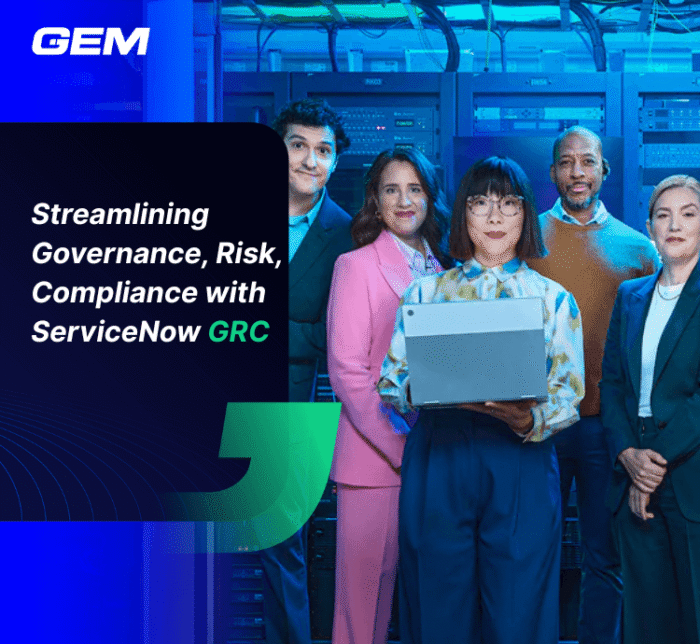Contents
- What are Artificial Intelligence Tickets?
- How Do Artificial Intelligence Tickets Work?
- Challenges of Traditional Ticketing Systems
- Ways Artificial Intelligence Tickets are Transforming Customer Service
- Examples of AI Ticketing in Real Life
- Best Practices to Implement Artificial Intelligence Effectively
- Key Notes
By 2029, agentic AI will autonomously resolve 80% of common customer service issues without human intervention, leading to a 30% reduction in operational costs, according to Gartner. This shift is prompting a fundamental rethinking of how service teams operate, prioritize, and scale support. Artificial intelligence tickets are emerging as a key component in this transition – automating repetitive workflows, classifying issues with greater accuracy, and routing requests in real time based on context. As more enterprises incorporate AI into service operations, the focus is moving from manual resolution to proactive and self-directed service. This article explores the concept of artificial intelligence tickets, how they work, the supporting technologies, and what their adoption means for customer service models.
What are Artificial Intelligence Tickets?
The Concept of Artificial Intelligence Tickets
Artificial intelligence tickets refer to service requests that are created, categorized, prioritized, and in some cases resolved by AI systems without direct human input. These tickets originate from various channels – email, chat, voice, or system alerts—and are handled using models trained to understand context, intent, and urgency. Instead of relying solely on manual triage and routing, AI tickets are processed through automated workflows that support faster resolution and more consistent outcomes across service operations.
This approach is increasingly applied across IT service management, HR operations, and external customer support environments to handle high-volume, repetitive queries. It enables service teams to shift focus toward complex issues that require human judgment while maintaining a consistent response framework for common requests.
Technologies behind AI Ticketing
Several technologies work in combination to support artificial intelligence ticketing:
- Natural Language Processing (NLP): Enables the system to interpret unstructured text from emails, chat messages, or voice transcripts. NLP helps determine user intent, classify requests, and extract relevant entities such as dates, services, or departments.
- Machine Learning (ML): Powers the prediction models used to categorize tickets, assign priority, and recommend next actions. These models are trained on historical ticket data and continue to improve over time with feedback loops.
- Conversational AI: Used in virtual agents and chatbots that can collect information, provide responses, or even create tickets based on user interactions. These systems often serve as the first point of contact in AI-driven service models.
- Workflow Orchestration Engines: Execute the tasks required to resolve or escalate tickets, such as sending notifications, updating systems, or assigning tasks. These are often configured within platforms like ServiceNow to support seamless service delivery.
- Integration Layers: Connect the AI ticketing system with other enterprise tools such as CRM, ERP, or monitoring systems. This allows for real-time data exchange and context-aware decision-making.
How Do Artificial Intelligence Tickets Work?
Artificial intelligence tickets operate through a sequence of data-driven processes that automate the lifecycle of service requests. The system begins by ingesting inputs from various channels, such as email, chat, system logs, or APIs, then applies AI models to interpret, classify, and act on that information. These models are trained on historical ticket data and continuously refined through supervised learning and feedback mechanisms.
The typical workflow includes the following stages:
- Detection and Ingestion
AI systems monitor communication channels and backend systems to detect events or queries that may require support. Some platforms use real-time monitoring tools to trigger ticket creation based on system behavior or user actions.
- Intent Recognition and Classification
Using natural language processing, the system interprets the content of the request to understand what the user needs. It then classifies the ticket into predefined categories such as password reset, access request, or incident reporting. This reduces the need for manual triage and improves consistency across service teams.
- Prioritization and Contextual Enrichment
Tickets are evaluated based on urgency, impact, and historical context. AI models analyze factors such as user profile, past interactions, and system dependencies to assign priority levels. Some solutions enrich tickets with additional metadata, such as device information or recent activity, enabling faster downstream resolution.
- Routing and Assignment
Once classified and prioritized, the ticket is routed to the appropriate agent or team, or in some cases, resolved automatically. AI can predict which team has the capacity and expertise to handle the request, optimizing resource allocation.
- Resolution or Automation Execution
For high-frequency, low-complexity tickets, AI systems can execute resolution steps automatically. This may include resetting credentials, provisioning access, or sharing relevant knowledge articles. In more complex cases, the system assists human agents by providing recommendations or pre-filled resolution paths.
- Learning and Feedback Loop
After the ticket is resolved, the system captures resolution outcomes and user feedback. This data is fed back into the training pipeline to improve model accuracy and decision quality over time.
As organizations scale their digital operations, AI ticketing systems are evolving toward agentic models capable of handling multi-step tasks independently.
Challenges of Traditional Ticketing Systems
Conventional ticketing models continue to pose several limitations for organizations trying to scale service operations or improve user experience. Built around manual workflows and limited automation, these systems often struggle to keep pace with growing demand and rising expectations.
- Delayed Response Times
Manual triage, classification, and routing slow down the entire ticket resolution process. Service desks often face backlogs during peak hours or when handling repetitive requests, leading to longer wait times for end users. Without automation, response time becomes directly tied to available manpower.
- Elevated Operational Costs
Traditional systems rely heavily on human agents to process and resolve tickets. As ticket volumes rise, maintaining timely service requires scaling support teams, which increases staffing costs. This linear cost model becomes unsustainable for organizations managing high-frequency service interactions.
- Variability in Resolution Quality
Issue resolution often depends on the expertise and availability of individual agents. This introduces inconsistency in outcomes, especially when dealing with similar requests across different teams or geographies. Escalations and rework become common, further increasing workload and user dissatisfaction.
- Limited Use of Data for Optimization
Legacy ticketing systems typically lack the capability to analyze patterns, predict demand, or recommend actions. Without machine learning models or integrated analytics, support leaders operate with limited visibility into root causes, recurring issues, or service trends, making it difficult to improve continuously or plan proactively.
These challenges create structural inefficiencies that impact both cost and service quality. Organizations looking to modernize their support functions are turning to AI-driven models to address these constraints and build scalable, resilient service operations.
Ways Artificial Intelligence Tickets are Transforming Customer Service
Artificial intelligence tickets are reshaping how service organizations deliver support, using automation and decision intelligence to restructure workflows, improve consistency, and expand operational capacity.
Intelligent Task Automation
AI systems now handle repetitive actions such as categorizing requests, assigning ownership, and generating first responses. These tasks, previously performed manually, are executed based on trained models that interpret language and predict intent. For high-volume, routine queries like password resets or policy clarifications, response and resolution can occur without agent involvement. This reduces processing time and removes bottlenecks during peak hours.
Operational Efficiency
By automating routine workflows, organizations lower the dependency on manual processes that often delay resolution. Service agents are no longer tied up with low-complexity tickets and can focus on escalations or edge cases. This reallocation of effort improves team productivity and shortens the overall support cycle. Over time, the system becomes more effective as it learns from resolution data and user feedback.
Faster Resolution Cycles
AI ticketing systems process incoming requests in real time, identifying urgency and context with greater accuracy. This leads to faster routing and eliminates the delays tied to manual triage. With automated prioritization and contextual enrichment, tickets move through the system with fewer handoffs. The result is a shorter time to resolution and more predictable service outcomes.
Cost Management
Automation limits the need for large service teams, especially in environments with high volumes of repeatable requests. Fewer escalations and less rework further contain operational costs. Organizations gain the flexibility to scale without a proportional increase in staffing or infrastructure. These efficiencies have a direct impact on the cost per ticket and long-term service delivery models.
Consistent Customer Experience
AI applies standardized logic to similar requests, which removes the variability often introduced by human judgment. Users receive more uniform responses, even when interacting with different support channels or regions. Systems can also surface relevant knowledge articles or suggest next steps based on context. This consistency contributes to higher satisfaction and fewer repeat contacts.
Scalable Service Delivery
AI ticketing platforms scale horizontally across departments and geographies without requiring structural redesign. They accommodate rising ticket volumes while maintaining the same speed and accuracy. This makes them particularly suited for organizations undergoing rapid growth or digital transformation. As usage expands, performance remains stable and measurable. Make your digital transformation seamless and future-ready Accelerate your business growth with zero-disruption modernization services. Maximize the value of your current infrastructure, streamline processes, and cut expenses.
Examples of AI Ticketing in Real Life
Artificial intelligence ticketing is being adopted across multiple sectors, driven by the need to manage large volumes of service requests with speed and precision. While the underlying models and workflows are similar, the implementation varies depending on industry-specific challenges.
1. Telecommunications
Network outages, device malfunctions, and account issues generate a high volume of support tickets daily. AI systems in this sector classify incoming user complaints, identify patterns linked to regional disruptions, and automatically escalate unresolved incidents to field teams.
For example, when a customer reports a connectivity issue via chat, the AI agent can check for local service anomalies, create a ticket, and suggest diagnostics—all without human intervention. This reduces the load on service centers while improving response accuracy.
2. Retail and E-Commerce
In retail, customer service teams handle inquiries related to order status, returns, refunds, and payment issues. AI ticketing systems categorize these requests in real time and recommend next steps based on purchase history and customer profile.
A common use case involves AI detecting a delay in delivery and proactively generating a ticket, notifying the customer with a resolution timeline. This model improves customer trust while minimizing the need for users to initiate contact.
3. Information Technology (IT) Services
Large enterprises with internal IT helpdesks use AI to streamline support for hardware, software, and access-related issues.
When an employee submits a request through a self-service portal, the AI engine can verify credentials, categorize the type of problem, and either resolve it automatically or assign it to the appropriate team. Over time, the system learns from resolution data, which increases the accuracy of future ticket handling. This approach is particularly useful in managing high-volume environments such as onboarding or system rollouts.
4. Healthcare
Hospitals and health systems use AI ticketing to manage internal support functions across IT, HR, and facility operations. For instance, when a nurse logs a ticket about a non-functioning workstation, the AI system categorizes it as an IT issue, checks for similar complaints in the same wing, and routes it to the on-site technician.
In non-clinical settings, AI supports HR teams by handling routine queries about schedules or payroll, freeing up time for more complex employee concerns.
5. Financial Services
Banks and insurance providers use AI ticketing to handle service requests from both customers and internal teams. Common requests include transaction disputes, fraud alerts, and account access problems. AI systems flag high-risk tickets for immediate review, while low-risk ones are resolved through automated workflows.
For example, if a customer reports an unrecognized transaction, AI can cross-reference it with known merchant data and initiate a refund process if conditions are met. This model improves fraud response while maintaining operational efficiency.
Best Practices to Implement Artificial Intelligence Effectively
Artificial intelligence offers measurable value when implemented with clarity, discipline, and alignment to business priorities.
1. Start with a Use Case That Solves a Real Operational Problem
AI adoption should begin with specific problems tied to operational efficiency or service performance. Projects grounded in high-volume, high-friction processes—such as customer support, claims handling, or supply chain alerts—offer a stronger foundation for early success. Starting with clear outcomes helps maintain stakeholder alignment and avoids experimentation without direction.
2. Build on High-Quality, Context-Rich Data
AI systems require more than large datasets—they need structured, relevant, and current information that reflects actual business behavior. Preparing this data often involves consolidating sources, resolving inconsistencies, and mapping records to real-world workflows. This step forms the backbone of any model deployment and shapes the quality of predictions over time.
3. Design for Integration, Not Isolation
AI should operate inside the systems that teams already use, not outside them. This includes embedding models into platforms such as CRM, ERP, or ticketing software, and aligning outputs with operational logic. Projects that remain disconnected from core workflows often struggle to scale or deliver consistent value.
4. Prioritize Transparency and Governance
As AI systems take on decision-making roles, organizations need clear processes for monitoring performance and addressing exceptions. This includes documenting model behavior, logging decisions, and routing edge cases to human review. A structured governance approach supports internal trust and prepares teams for external scrutiny.
5. Implement with the Support of an Experienced Partner
Implementing AI across real-world systems requires more than technical skill-it involves understanding domain context, deployment environments, and data quality challenges. A partner with experience in applied AI, like GEM Corporation, brings that combination of expertise. GEM supports clients from initial assessment through to model integration, platform alignment, and ongoing optimization. This approach streamlines implementation and reduces the friction that often slows internal efforts.
6. Invest in Feedback Loops and Continuous Learning
AI performance improves over time, but only if systems are designed to learn. This requires closing the loop between predictions and outcomes, collecting feedback, and updating models regularly. Organizations that treat AI as a living system, rather than a one-time deployment, are better positioned to adapt and scale
Organizations that treat AI as part of their operating structure, not as a standalone initiative, are better positioned to drive sustainable outcomes. With the right use case, reliable data, and experienced delivery support, AI moves from a concept to a capability that scales with the business.
GEM Corporation is an AI Agency that builds apps and AI-driven solutions tailored to enterprise needs across industries. Our expertise spans computer vision, natural language processing, predictive analytics, and process automation, each designed to align with specific operational goals and data environments.
Rather than offering generic platforms, we work closely with clients to architect systems that map directly to their workflows, infrastructure, and user expectations. From independently trainable OCR engines to custom-built AI chatbots and recommendation systems, we deliver solutions that reflect the complexity and nuance of real-world conditions. This approach positions us as a strategic partner for organizations looking to operationalize AI with precision and purpose. Stop trying to find the dots. Let us help you connect them! With GEM as your ServiceNow Partner, accelerate delivery, reduce complexity, and gain a competitive edge in today’s fast-changing market.
Explore more:
- Top 8 outstanding IT outsourcing countries
- Top 20 Software Outsourcing Company Vietnam (2025 Edition)
- Top 5 best IT outsourcing companies in Australia
- Top 15+ IT Companies in South Africa to Watch in 2025
Key Notes
Artificial intelligence tickets are reshaping service operations by automating repetitive tasks, improving resolution speed, and creating scalable support systems across industries. From telecom to healthcare, organizations are using AI to streamline ticket handling, standardize responses, and manage growing volumes without expanding teams. Success depends on structured implementation, grounded in real use cases, governed by reliable data, and integrated into existing systems. As more businesses move toward operational AI, artificial intelligence tickets offer a clear path to measurable service improvement and long-term efficiency.
Explore how AI Agency by GEM Corporation helps businesses harness the power of AI—faster, smarter, and at scale.
GEM Corporation brings deep experience in building AI solutions tailored to enterprise needs, supporting clients from design through deployment. To explore how artificial intelligence tickets can support your service operations, connect with GEM’s AI specialists for a tailored consultation





